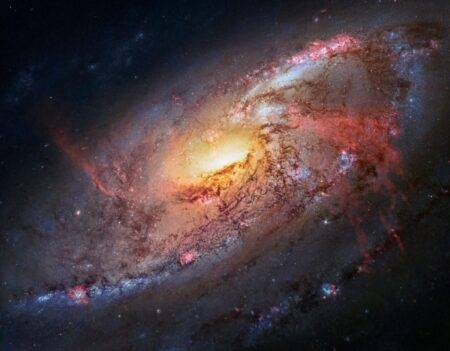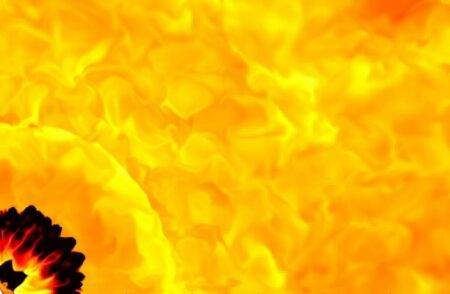The news outlet reported that the Israeli army was responsible for carrying out ‘summary executions’ without corroboration.
Browsing: World News
Latest World news news, comment and analysis from WTX News, the world’s independent and unbiased news publisher.
Azerbaijan told France Wednesday not to “intervene” in its internal affairs after Baku arrested a Frenchman on espionage charges with tensions running high between the two countries.
Bitcoin price swings after fake regulator post Bitcoin briefly surged on Tuesday following a post on the US markets regulator’s…
Ex-President Donald Trump said a finding against his presidential immunity claim would be ‘the opening of Pandora’s box’.
A haunting echo of a 40 year old double murder.
A state of emergency is in place after a drug cartel leader broke out of prison.
Multiple bodies were discovered in an Oldsmobile submerged in a pond in front of Sawgrass Mills mall in Sunrise, Florida.
New year, new face.France’s youngest-ever president naming the country’s youngest-ever prime minister. We willl ask why Emmanuel Macron chose to replace Elisabeth Borne with Gabriel Attal and chart the meteoric rise of a 34-year old Parisian who has already enjoyed stints as city councilor, party spokesperson, budget minister, government spokesperson and most recently education minister.
St Petersburg’s court service said it was pleased he had turned up fully clothed to the hearing.
Dozens reported killed in Gaza as Blinken urges protection for civilians US diplomat Antony Blinken has arrived in Israel for…
But even this record could be short-lived.
Breaking: Emmanuel Macron picks Attal, 34, as France’s youngest PM France’s next prime minister is set to be Gabriel Attal,…
Jozef Hanuska is accused of murdering 48-year-old Patricia and arranging her body in a sickening display in Bratislava, Slovakia.
Great British Bake-Off star Jurgen Krauss is understood to be one of the celebrities being lined up to spearhead a campaign to persuade more UK children to study the language.
The bodies of four newborns were discovered.
He has some choice words for world travellers.
It will help scientists understand the Moon’s potential to provide resources like water.
She compared the room she was lashed in to a ‘medieval torture chamber’.
A Jeffrey Epstein victim claimed he filmed her friend having sex with Prince Andrew, ex-President Bill Clinton and magnate Richard Branson.
Dark energy makes up around 68% of the universe, but nobody knows what it is.
Condemning the ‘commercialisation’ of pregnancy, he said the life of an unborn child must not be ‘suppressed or turned into an object of trafficking’.
A plug door fell off one of the jets run by Alaska Airlines mid-flight last Friday.
Investigators are considering arson as a possible cause.
This computer simulation shows a galactic wind which blows gas out of the galaxy for 200 million years (Picture: SWNS)
Mysterious radio waves the size of several galaxies could be galactic winds from stars that exploded billions of years ago, according to new research.
The winds, which can travel at up to 2,000km per second, were only discovered in 2019 and have so far remained a mystery.
But a team of American astrophysicists now believe the waves are shells formed by galactic winds – possibly from massive exploding stars known as supernovae.
Computer simulations demonstrating galactic winds blowing over 750 million years offer an explanation for the radio circles which have left scientists perplexed up to this point.
Back in 2019, the newly-completed Australian Square Kilometer Array Pathfinder (ASKAP) telescope picked up something no one had ever seen before: radio wave circles so large they contained entire galaxies at their centres.
When they observed these radio rings, a team of researchers from the University of California San Diego studying ‘starburst’ galaxies believed they could provide the answers as to their origin.
Scientists had no idea what the bizarre radio signals were when they discovered them in 2019 (Picture: SWNS)
In their study, published in the journal Nature, the researchers delved into massive starburst galaxies that can drive these ultra-fast outflowing winds.
Starburst galaxies have an exceptionally high rate of star formation.
When stars die and explode, they expel gas from the star and its surroundings back into interstellar space.
If enough stars explode near each other at around the same time, the force of these explosions can push the gas out of the galaxy itself into outflowing winds – which can travel at up to 2,000 kilometres per second.
“These galaxies are really interesting,” explained astrophysicist Dr Alison Coil, a lead author of the study.
“They occur when two big galaxies collide. The merger pushes all the gas into a very small region, which causes an intense burst of star formation.
“Massive stars burn out quickly and when they die, they expel their gas as outflowing winds.”
Technological developments allowed ASKAP to scan large portions of the sky at very faint limits which made odd radio circles (ORCs) detectable for the first time in 2019.
These ORCs were enormous: hundreds of kiloparsecs across, where a kiloparsec is equal to 3,260 light-years.
For comparison, our galaxy, the Milky Way, is around a mere 30 kiloparsecs across.
Since the ORCs were detected, a multitude of theories has abounded to explain their origin, from planetary nebulae – an emission nebula consisting of an expanding, glowing shell of ionized gas ejected from red giant stars late in their lives – to black hole mergers.
But radio data alone could not discriminate between these various theories.
Dr Coil and her colleagues thought it possible the radio rings were a development from the later stages of the starburst galaxies they’d been studying, and began to look into ORC 4 – the first ORC discovered, which is observable from the Northern Hemisphere.
Until 2019, ORCs had previously only been observed through their radio emissions, without any optical data.
Dr Coil’s team, however, used an integral field spectrograph at the W.M. Keck Observatory in Maunakea, Hawaii, to look at ORC 4 which revealed a tremendous amount of highly luminous, heated, compressed gas – far more than is seen in the average galaxy.
Using optical and infrared imaging data, the researchers determined that the stars inside ORC 4 galaxy were around six billion years old.
“There was a burst of star formation in this galaxy, but it ended roughly a billion years ago,” Dr Coil said.
Dr Cassandra Lochhaas, a postdoctoral fellow at the Harvard & Smithsonian Center for Astrophysics and a co-author on the study, ran a series of computer simulations to replicate the size and properties of the large-scale radio ring, including the large amount of shocked, cool gas in the central galaxy.
Dr Lochhas’ simulations demonstrated outflowing galactic winds blowing for 200 million years before they shut off.
When the galactic wind stopped, a forward-moving shock continued to propel high-temperature gas out of the galaxy and created a radio ring, whilst a reverse shock sent cooler gas falling back onto the galaxy.
The simulation played out over 750 million years — within the ballpark of the estimated one-billion-year stellar age of ORC 4.
“To make this work you need a high-mass outflow rate, meaning it’s ejecting a lot of material very quickly,” Dr Coil said.
“And the surrounding gas just outside the galaxy has to be low density, otherwise the shock stalls. These are the two key factors.
“It turns out the galaxies we’ve been studying have these high-mass outflow rates. They’re rare, but they do exist.
“I really do think this points to ORCs originating from some kind of outflowing galactic winds.”
Dr Coil added that these outflowing winds could not only help astronomers understand ORCs, but could also help astronomers understand the outflowing winds themselves.
“ORCs provide a way for us to ‘see’ the winds through radio data and spectroscopy,” she said.
“This can help us determine how common these extreme outflowing galactic winds are and what the wind life cycle is.
“They can also help us learn more about galactic evolution: do all massive galaxies go through an ORC phase?
“Do spiral galaxies turn elliptical when they are no longer forming stars? I think there is a lot we can learn about ORCs and learn from ORCs.”
Your next break could be a little closer to home.


























